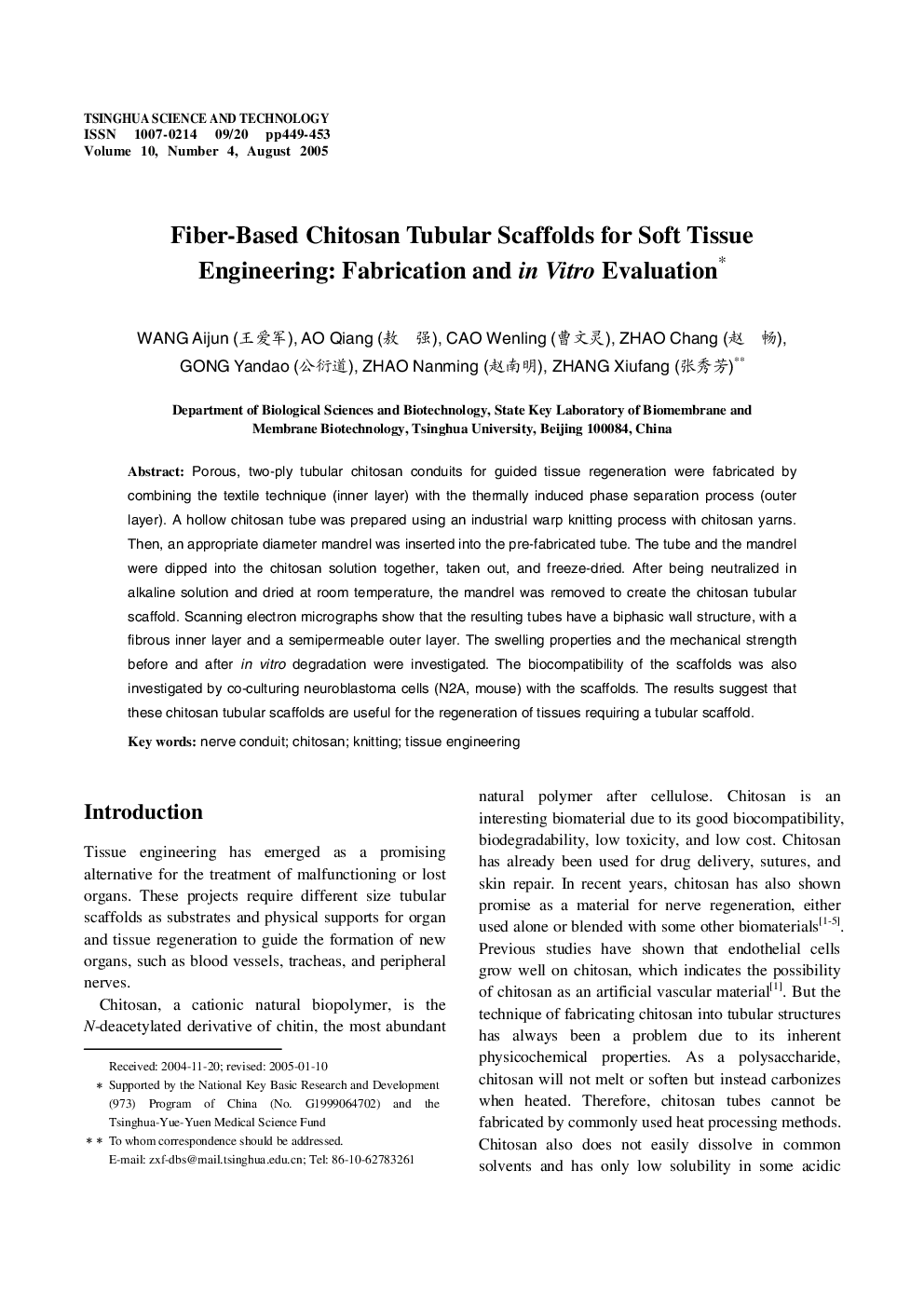| Article ID | Journal | Published Year | Pages | File Type |
|---|---|---|---|---|
| 10429223 | Tsinghua Science & Technology | 2005 | 5 Pages |
Abstract
Porous, two-ply tubular chitosan conduits for guided tissue regeneration were fabricated by combining the textile technique (inner layer) with the thermally induced phase separation process (outer layer). A hollow chitosan tube was prepared using an industrial warp knitting process with chitosan yarns. Then, an appropriate diameter mandrel was inserted into the pre-fabricated tube. The tube and the mandrel were dipped into the chitosan solution together, taken out, and freeze-dried. After being neutralized in alkaline solution and dried at room temperature, the mandrel was removed to create the chitosan tubular scaffold. Scanning electron micrographs show that the resulting tubes have a biphasic wall structure, with a fibrous inner layer and a semipermeable outer layer. The swelling properties and the mechanical strength before and after in vitro degradation were investigated. The biocompatibility of the scaffolds was also investigated by co-culturing neuroblastoma cells (N2A, mouse) with the scaffolds. The results suggest that these chitosan tubular scaffolds are useful for the regeneration of tissues requiring a tubular scaffold.
Related Topics
Physical Sciences and Engineering
Engineering
Engineering (General)
Authors
Wang (çç±å), Ao (æ 强), Cao (æ¹æçµ), Zhao (èµµ ç
), Gong (å
¬è¡é), Zhao (èµµåæ), Zhang (å¼ ç§è³),
